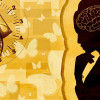Tasting ancient therapeutic plants
Interview with
In ancient Greece and Rome, the expected effects of botanical drugs - which dominated the formulary and continue to play a massive role in medicine today - were explained by their taste. But what did these agents taste like, and how informative was this rationale? Speaking with Chris Smith, step forward Marco Leonti, from the University of Cagliari. He set up a project to track down, grow or harvest and then taste - with the help of a panel of 11 tasters - many of the agents documented in the classical literature and relate them to the indications for which they were originally prescribed…
Marco - I worked before with indigenous people in southern Mexico. There I learned that people use taste and smell for selecting their medicinal plants and botanical drugs. And I always had this question about the humoral system of ancient European, Greek, Roman medicine. Human therapy was in vogue until the 18th century, and I always wondered, why was this so persistent through time ? Then I found out by reading literature that taste was involved. And then I connected the taste with the experience in southern Mexico and the literature about indigenous people. And then I thought, wow, let's make an exploratory study about that.
Chris - What was your reference text then? What did you go to to work out what people were taking. So in other words, what, what drugs or plants they were exploiting for what indications and why they thought those were the right things for the job?
Marco - Our reference text was De Materia Medica, by Dioscorides. It's the foremost pharmaceutical textbook from antiquity that came down to us and was repeatedly translated, and used across the centuries and millennia.
Chris - So talk us through what you did, what the book said, and then how you put it to the test, what you did.
Marco - We went through chapter by chapter trying first of all to identify the botanical drug. We could identify about 70% of all botanical species that are described in the Book.
Chris - How many is that?
Marco - We identified 421, I think there are.
Chris - Once you had that list, what did you then do with it?
Marco - Well, we extracted all therapeutic information that was written down in that book and we categorised that therapeutic information into therapeutic use groups with 4,433 entries. But from that list we had to get the drugs. So we collected first of all the drugs. Some of these drugs I cultivated in my garden, or some I picked from my garden because I have quince here and the flowers of quince you need to be there ready to pick the flowers of quince when they, when the flowers are blooming. Others we bought, and most of them we collected in field doing field work across Europe.
Chris - Did you all alert the drug squad before you started growing these things in your garden?! <Laugh> Some of them on that list are presumably banned substances, aren't they?
Marco - Some of them are, yeah. Some of them are, are toxic substances. Yeah. Yeah. Some of them are toxic. But for the tasting panel, we of course dispense that amount of drug necessary to perceive taste, but without the probability that that's the panelists can intoxicate themselves.
Chris - Got you. So you actually having grown these things, you make extracts, which would be analogous to what the people would've done back in antiquity. Then you actually ate them!?
Marco - We had 11 volunteers. So we had this, this collection of botanical drugs, which then we dispensed to 11 panelists in a double blind clinical trial.
Chris - And what did you ask them when you, when you gave them the agents? What was the question or the sort of guidance around appraisal, the instructions that you gave to those panelists?
Marco - Well, we made a session before that to be clear about the taste descriptors that we used to qualify the taste perception about 22 different tastes. And we did that first in a pre-session. And then finally panelists, without knowing what they were tasting, they were instructed to chew on the botanical stuff, perceive taste, then spit out, wash their mouth and write down the intensity of perception and the quality of perception.
Chris - And did you see the sort of relationship that you were expecting?
Marco - My interpretation of the results are that at that time when, let's say in in ancient Greek medicine, that's where people started to philosophise about nature and medicine and they tried to make sense of what they were doing and they were thinking about tastes, the colours, about the whole world, how it's connected together. And they took these patterns for granted. But what we see now is thanks to the pharmacological data that we are able to, to read now, you can explain this through the different physiological effects that specific tastes can elicit in humans. There are taste receptors in our body throughout, not only in our mouth, but also along the gastrointestinal system, the gut and the liver. So, through this data, now we can really see that this makes sense or where it makes sense. Sometimes it may make sense and of course people in former times did not know that, but what they got at the time was a consensus that came down to them for millennia of years. This was the drugs that were used in ancient Greek and sold on the markets, right. And Dioscorides the author of that book, our study is based on, he just described the most common drugs that were used in the Eastern Mediterranean at that time. And our study kind shows how taste perception has moulded that therapeutic knowledge and that mate America. And that's why the gangs in Greek thing came to the idea that taste is involved in this whole system of medicine they had.
- Previous Dyslexia among scientists
- Next Do scientists stay scientists?










Comments
Add a comment